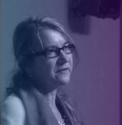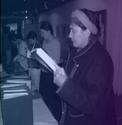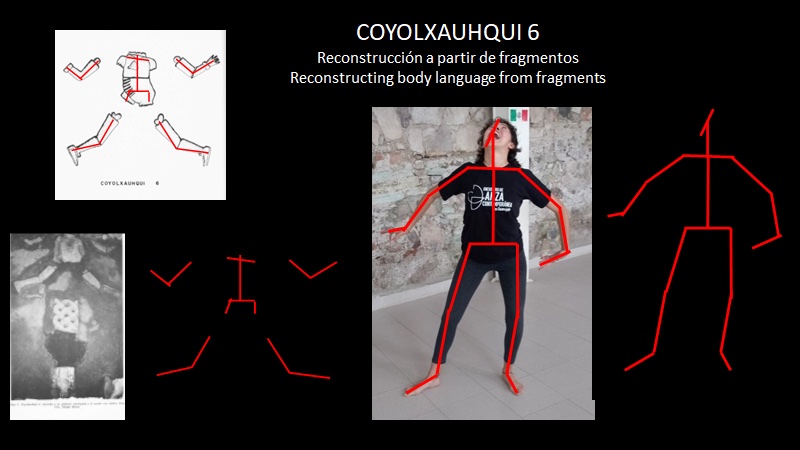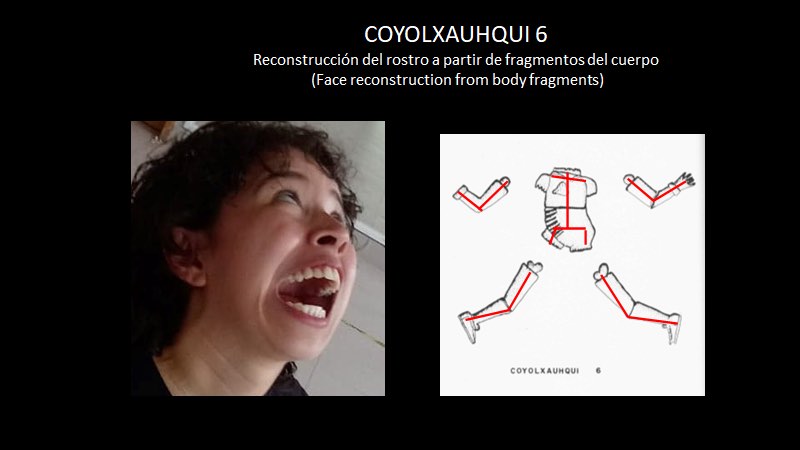Death on the edge of Obsidian
Fellow women, what moves me to work in theatre?
Certainly, feeling accompanied, sensing that I am part of something bigger that protects and supports me, granting me the ability to stand upright. As the ancients would say: something that allows me to be truth. This ‘something bigger’ that includes me, includes you as well. However, the bridge that connects us is under permanent construction. We must ask ourselves every day: in what way can I continue weaving this bond? That bridge that enables us to hop from your world to mine and allows us both to meet at times to transform ourselves. Today, I build my bridge upon memory carved in stone, painted with cochineal, and painted on a temple´s wall. I build my bridge sculpted at the base of the pyramids, and bas-reliefs. This memory should be able to weave a solid bridge between you and me. However, how can we coincide? How can I know if you will be waiting for me on the other side of the bridge?
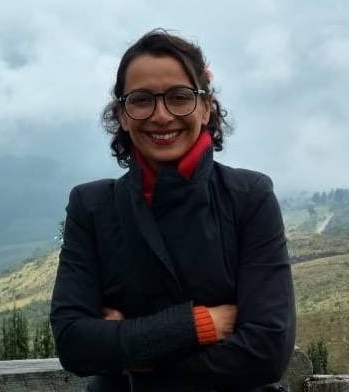 Silence. Let’s listen. There is a heartbeat gaining presence. It is not me; it is not you. It is a heartbeat which envelops everything, it is the universal rhythm that clothes us, that sustains us. We listen to it, and we try to syntonise ourselves with it to become true. We follow the heartbeat and when I arrive at the bridge, you are coming forward to find me.
Silence. Let’s listen. There is a heartbeat gaining presence. It is not me; it is not you. It is a heartbeat which envelops everything, it is the universal rhythm that clothes us, that sustains us. We listen to it, and we try to syntonise ourselves with it to become true. We follow the heartbeat and when I arrive at the bridge, you are coming forward to find me.
I consider the former paragraphs a metaphor for the research I am working on. A pursuit for an identity in theatrical language, capable of provoking a transcendental experience in the spectator. This experience is what we call: witnessing death at the edge of obsidian (1). The project intends to achieve the experience specifically using Mexican iconography to create vocabulary along with musical rhythm as a dramatic structure.
The first time I had the idea to work this way was when I observed my kathakali teacher KKM Vasu Pisharodi presenting the cholliyattams: he would direct the actors, the percussionists, the singers, as well as show the mudra and the corresponding navarasam. He would also keep rhythm by using his cane. And surprisingly, HE NEVER LOST THE BEAT. Not even when he got up from his chair to spit out paan; it was as if dominating the rhythm gave him the control of everything. That was when I realized: whoever dominates the dilation and condensation of time, seduces the audience because they become closer to the Gods.
Whoever dilates and condenses time, creates a new space, a new reality, a new world, a new order; therefore, he/she becomes a little bit like God(dess) putting in front of our eyes a world that obeys other rules, that moves in a different time decided by the actor/actress. The mere opportunity of contemplating this creational capacity was transcendent because it revealed to me me our own divinity.
I keep seeking, though. Constantly inquiring and searching. If anyone is out there on the same path, I will be glad to find her at the other side of the bridge.
Eugenia Cano
Guanajuato, Gto, November 22nd, 2022
1: This is a reference of the obsidian knives the Mexica people used for their sacrificial rituals.



